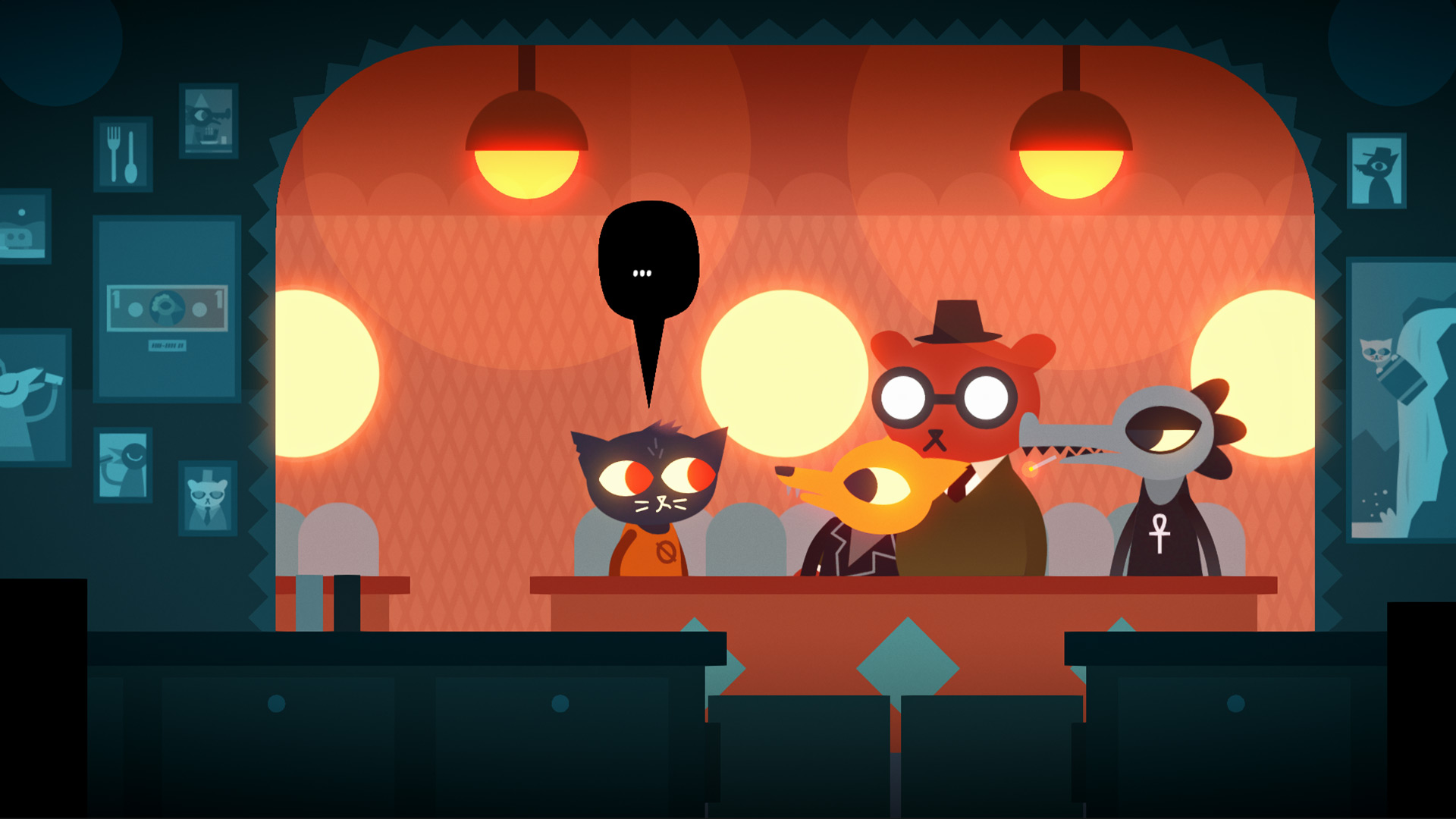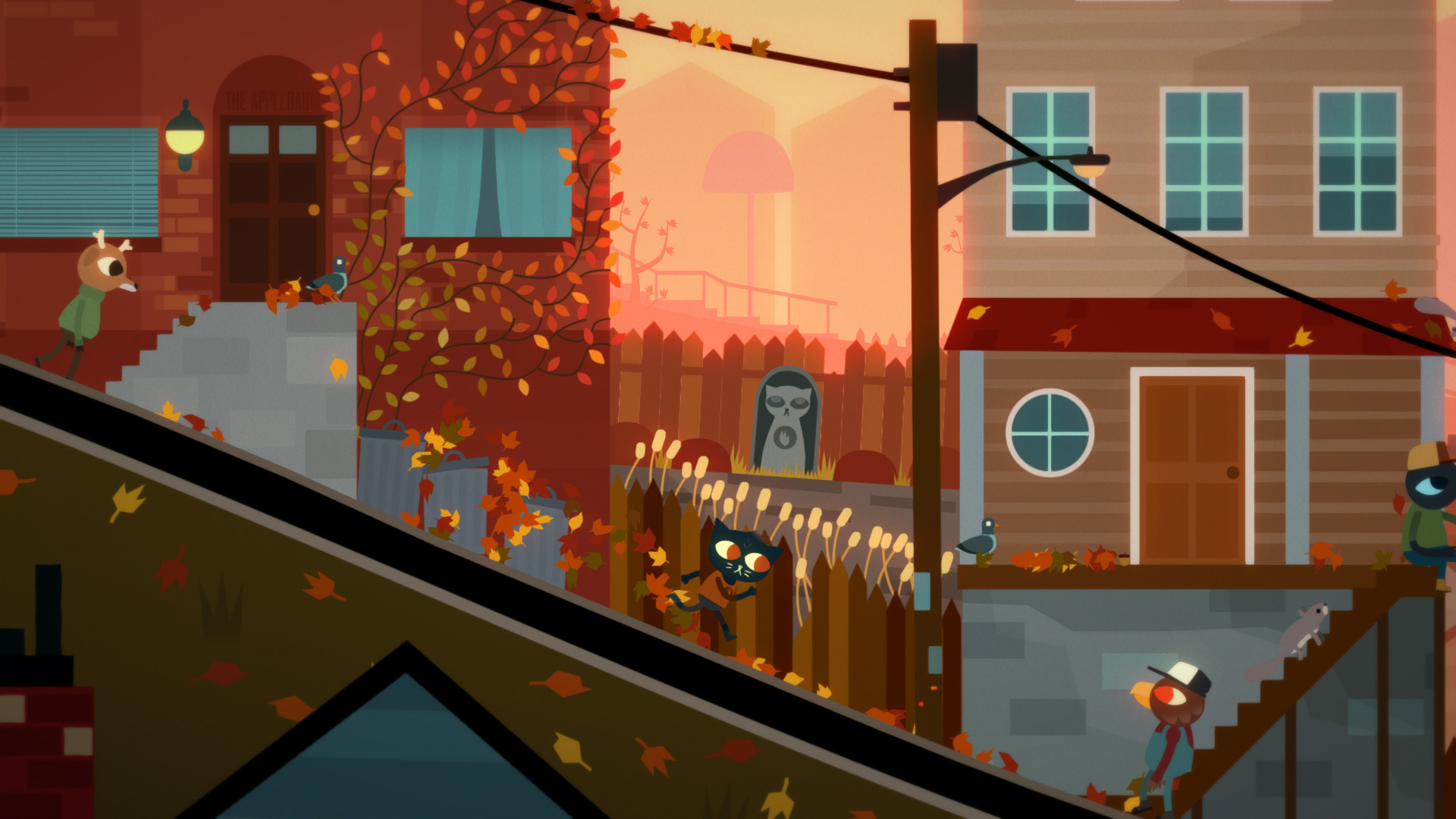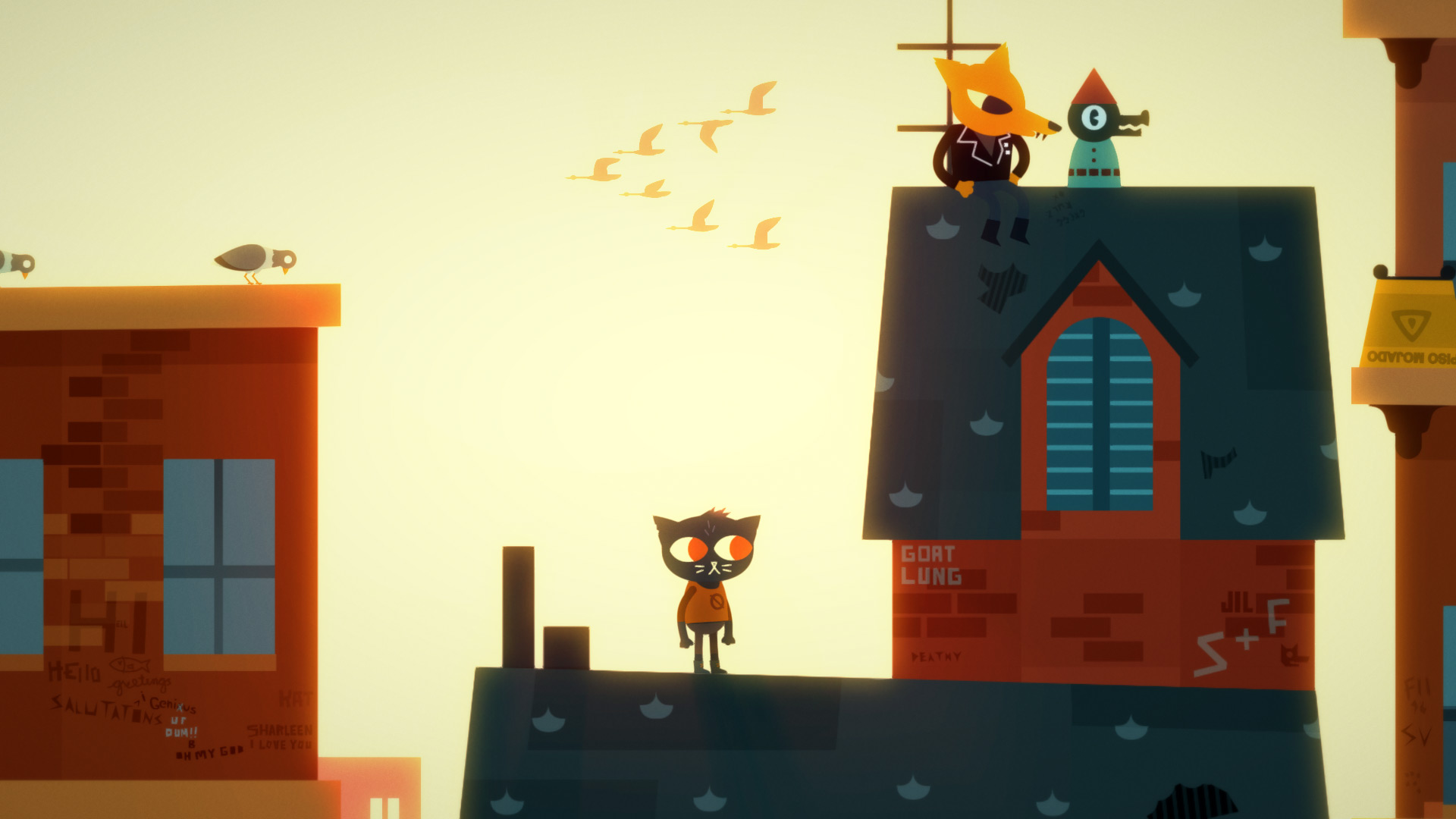Night in the Woods' portrayal of mental health reminded me that it’s okay to not be okay
Night in the Woods and its characters allowed me to accept that my feelings are valid

Every once in a while you come across a game you didn’t know you needed. Once you start playing it, something clicks. Magic happens. Feelings begin to swirl around your heart, and it unexpectedly ends up having a significant impact on your life. Infinite Fall’s Night in the Woods was that game for me.
After graduating from university, I spent my days going from one panic attack to the next, in a dead-end sea of job application rejections. My self-loathing was making me desperately unhappy, and I couldn’t quiet the voice in my head telling me I was a waste of space. Happiness was like some unobtainable quest item and my inner demons were keeping it from my reach. When I came to Night in the Woods last year, I was 24 and still living at home. I hadn’t gotten any closer to my dream of writing for a living, and all I had to my name was a part-time job. My friends were few and far between, the unwarranted guilt of still burdening my family would never leave me, and after years of trying, hope was running dry.
Since entering my 20s I’d been told again and again these will be the best years of my life. You’re young, in your prime, and the whole world is at your feet. But not enough is said about how difficult young adulthood is. From my own experience, it’s marred by uncertainty, self-doubt and anxiety. My only escape from those unrelenting days were games. As someone who had grown up on a healthy diet of consoles over the years, games had become my ultimate comfort. Maybe, I thought, Night in the Woods would give me a moment’s reprieve from my troubles. Little did I know it would actually help me finally confront them.

Mental health courses through the veins of Night the Woods. Rather than it being about mental health issues, it focuses on the characters who suffer from them, and runs on the twists and turns of protagonist Mae Borowski’s mental well-being. Her mental stability can sometimes be abstracted and typified by the nightmares and horror enveloping the story, but for the most part it’s the first game I’ve encountered that makes it an ordinary part of life. Every character you encounter in the game has their own relatable troubles, and by normalising what is often stigmatised, Night in the Woods’ portrayal of mental health is revolutionary and important in its own way.
Mae is a 20-year-old college dropout who returns to her hometown of Possum Springs and moves back in with her parents where she rekindles her relationships with the friends she left behind. Throughout the game it becomes clear she’s suffering from depression, anxiety and the struggle to resurface from a dissociative disorder which makes her feel like she’s leading an aimless existence. An all too familiar story began to unravel before me. The parallels between Mae’s life and mine really hit home.
I didn’t feel like I was allowed to be sad. How could I tell anyone? What right did I have to say I was struggling? It was my fault, wasn’t it? Night in the Woods was a big old rallying cry to my downtrodden heart that signalled how okay it was, and that any struggles we face and overcome always count, no matter how insignificant we worry they’ll be perceived when anxiety kicks in.
Mirror image

Just before a party in-game, you assume the role of Mae’s inner voice as she stands in front of a mirror to give herself a pep talk. Mae puts herself down for things she perceives as flaws, be it her notched ear, or big nightmare eyes. Sometimes your mind can truly be your own worst enemy, and the scene made me think about the last time I’d ever told myself anything positive.
Weekly digests, tales from the communities you love, and more
Putting myself down is practically wired into my brain like some self-inflicted malware. I was struck by how powerful such a simple scene could be and how much I saw myself reflected in the moment. Mae bolsters herself to get through the social occasion, and despite my own neuroses, I believed she could. So why couldn’t I believe in myself, too? This was the first stepping stone to realising I needed to be kinder and gentler towards myself, and - more importantly - believe I could make it through.

Night in the Woods is wrapped up in a series of days. Throughout, Mae tries to avoid facing up to the reason she returned home by dodging her parents questions and running about recklessly along power cables and rooftops. From stupid knife fights with Gregg to heart-to-hearts with Angus, and college parties with Bea, some days stand out more than others - just as they do in real-life. By setting up the game with a day by day format, it instills the feeling that getting through each day is a victory, a way to get to the next point.
This sense of progression felt inconspicuously encouraging. When everything just seemed to get worse, the thought of facing a new day seemed overwhelming - impossible, even. There’s courage in getting through the day when you feel like you can’t. Night in the Woods says a lot for the small victories in life. Maybe you didn’t change the world, or achieve everything you wanted, but you got through the day and that’s enough. It helped me realise I shouldn’t be so hard on myself when days don’t go as planned. Acts of bravery don’t always have to be so grand, sometimes the quiet moments of courage you have that no one sees mean so much more.
"What you're going through, it exists."

Just as the story of the game begins to turn and horror starts to leak into the plot in the most unexpected way, Mae begins to explain how she has become numb to the world around her. Everything, as she sees it, became meaningless, including things she used to enjoy. “Something broke in my head, in my life” she says in confidence to Gregg or Bea (depending on whose friendship you pursue). The world is “just shapes” to her, which is illustrated throughout the game at the end of every dream sequence when she dissolves into a flurry of cubes and wakes up to start a new day.
“What you’re going through, it exists” Bea replies. Reading those words had such a big impact. It was as though Bea was validating my feelings as well as Mae’s. Tears began to stream from my eyes like a waterfall. Suddenly it felt like what I’d been suffering through was real and it took a fictional character in a game to make me accept it. I was allowed to talk about it, to tell someone.
I was just as scared as Mae and I needed help. Mae’s story was so close to home it felt like the game was reaching out to me from the screen, gently resting its hands on my shoulders, and yelling, “we understand you, it’s going to be okay! What you’re feeling is real and it doesn’t make you weak or broken!” - I can’t even begin to explain how important the feeling was.
"At the end of everything, hold onto anything"

I never expected Night in the Woods to push me to ask for help and keep trying, but it did. By interweaving Mae’s internal struggles into the backdrop of the game, and framing the world through her eyes, the story is so important because of the way it normalises mental health. Mae can’t shy away from her inner demons, whether it be amidst the lucid, neon tinted nightmares she runs through, or her day-to-day battles. Ultimately, she wants to be somebody, to find meaning in the mess of shapes we call life. As she says, it’s “pretty amazing to be something at least.”
Life is a puzzle no one ever really solves, but as the tagline of the game says, “at the end of everything, hold onto anything.” To me those words mean that when things are at their worst, hold onto anything you can find meaning in. Night in the Woods has given me something to hold onto. My life can be a big, magnificent scary mess. But in those moments when life loses its shape, and my anxiety and self-doubt resurfaces, Mae’s nightmare eyes come into focus and I feel less alone. I feel reassured.

I started out writing for the games section of a student-run website as an undergrad, and continued to write about games in my free time during retail and temp jobs for a number of years. Eventually, I earned an MA in magazine journalism at Cardiff University, and soon after got my first official role in the industry as a content editor for Stuff magazine. After writing about all things tech and games-related, I then did a brief stint as a freelancer before I landed my role as a staff writer here at GamesRadar+. Now I get to write features, previews, and reviews, and when I'm not doing that, you can usually find me lost in any one of the Dragon Age or Mass Effect games, tucking into another delightful indie, or drinking far too much tea for my own good.


